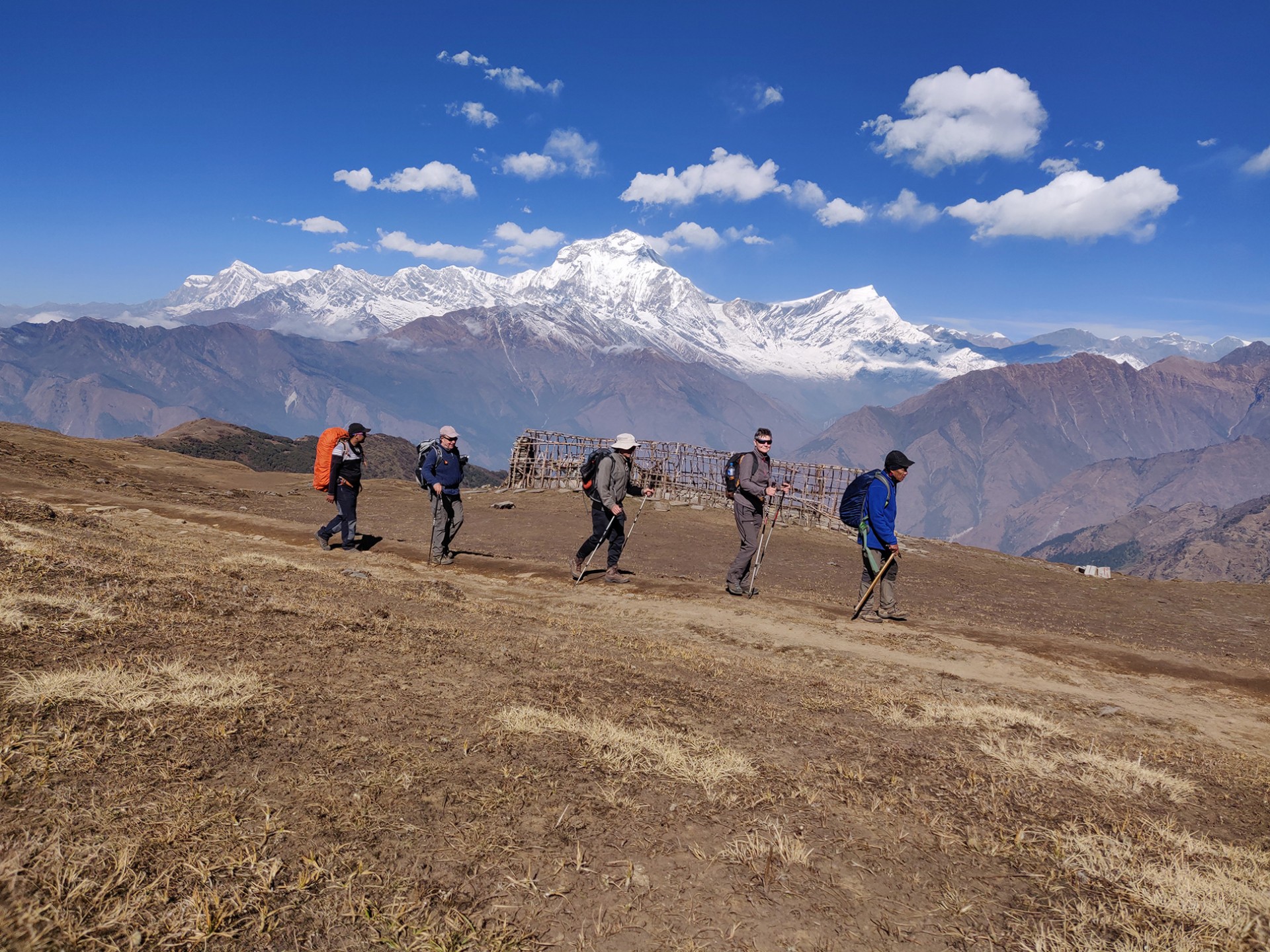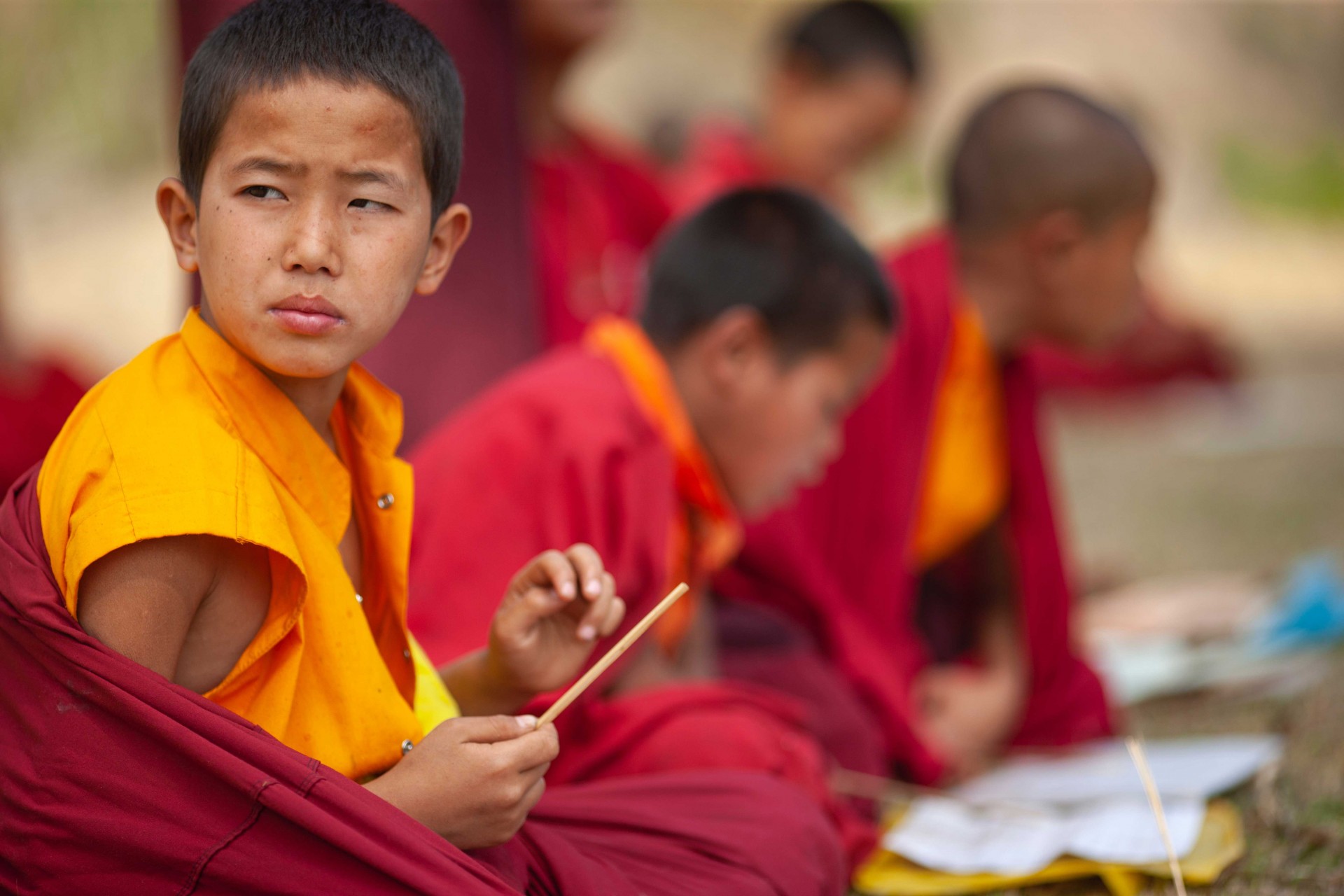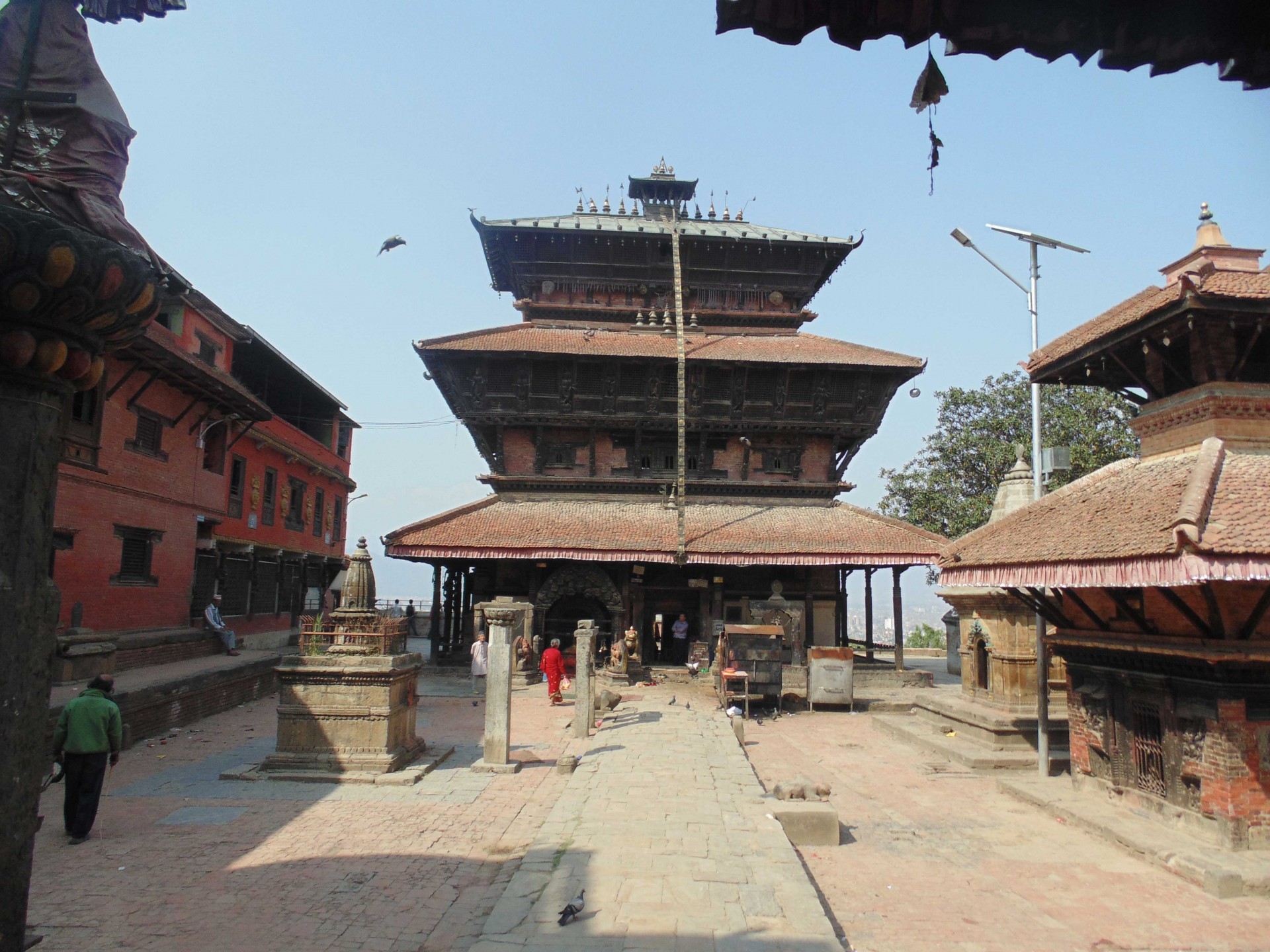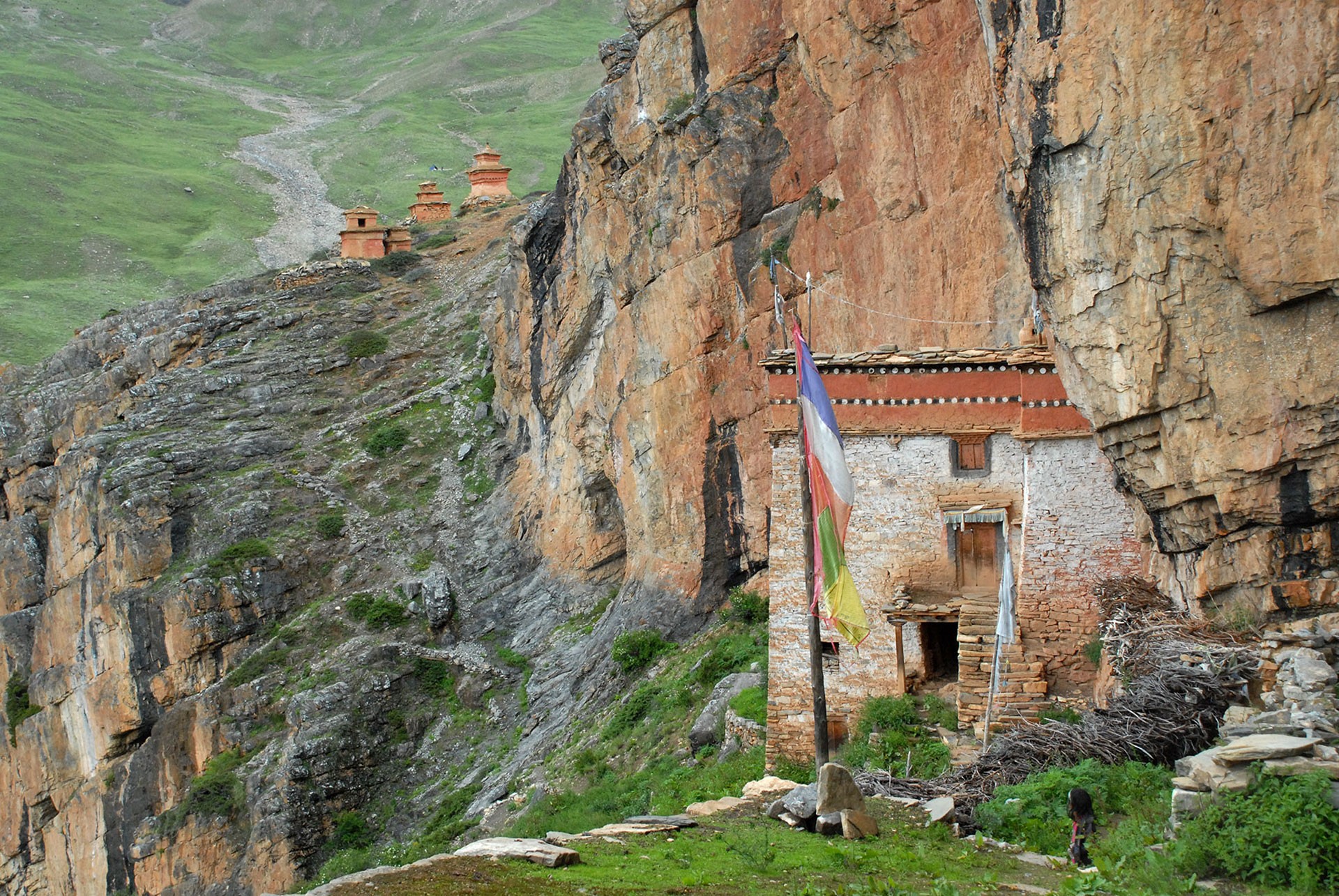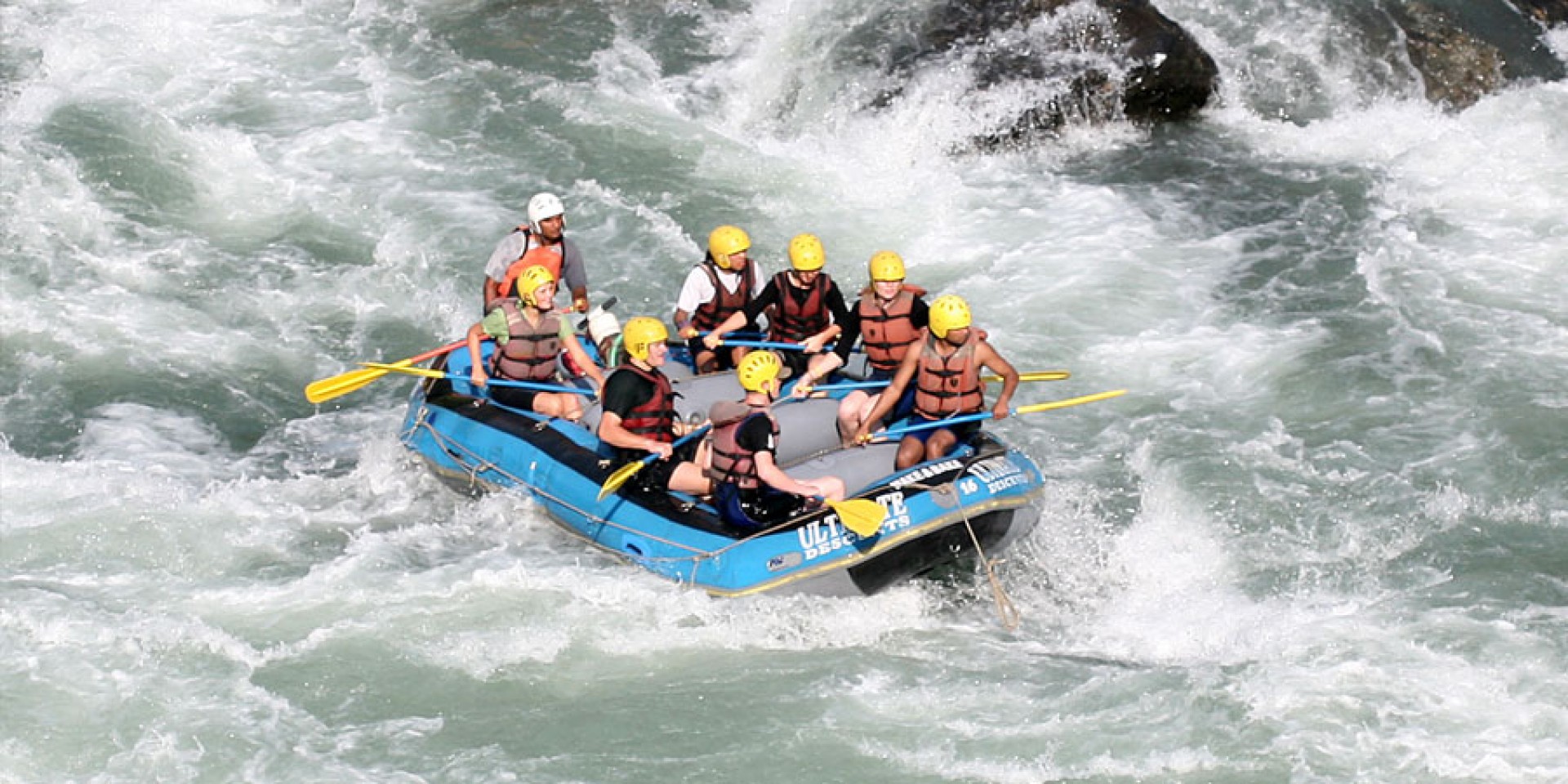Kathmandu Cultural Tour 9N/10D
KATHMANDU
This package let you discover the Culture, Tradition, Sculpture, Wood carving and Architecture of 7 UNESCO World Heritage Sites of Kathmandu Valley within a radius of 20 km. Kathmandu Valley comprises of three historical palaces squares – Kathmandu, Patan and Bhaktapur Durbar Squares from early 14th to late 18th centuries. Kathmandu is the city of festivals and temples. Specially, in the month of March, April October, and November, national festivals are celebrated like Holi (festival of colors) Bisket Jatra (9-day long chariot pulling festival), Dashain and Tihar (festival of lights and flower) are celebrated throughout the valley. We can experience religious harmony with lots of Hindu and Buddhist pilgrimage sites worshipped by both Hindus and Buddhist.
Highlights of this tour:
Swayambhunath Stupa
lies 3 km west of Kathmandu, Swayambhunath is one of the holiest ancient Buddhist Stupa in Nepal. Swayambhu means “self-existent one”. It was said to be built by King Manadeva in 460 A.D. as per the stone inscription. During the 13th century, Swayambhunath had developed into an important center for Buddhism. It is believed that Kathmandu valley used to be a huge lake by the name of Nagadaha. Bipashwi Buddha sowed the seed of Lotus flower that bloomed in the middle of a lake. A lot of devotees come to pay homage to the Holy Lotus. Manjushree (God of knowledge and wisdom) came from China and paid homage to the holy lotus from the place called Nilgiri (which is present day Nagarkot). He drained the water out of the lake from the place called Chovar. It is believed that he covered the holy lotus with the dome and meditated.
Temple of Harati Ajima, Nagpur, Pratappur, Anantapur, Agnipur, Santipur, Vasupur, Bayupur, Bihars, and Chaityas, prayer flags (representing five cardinal elements of life) are the major highlights of Swayambhu. Swayambhu is the best place to observe religious harmony between Hinduism and Buddhism in Nepal.
Kathmandu Durbar (Palace) Square
It is believed that around 2500 years ago Kathmandu valley used to be a great lake. Manjushree a follower of Buddha drained the water out of the valley with his magical sword from the place called Chovar. Kathmandu also known as Kantipur (City of glory) is said to be designed like Khadga (Sword) by King Gunakamdeva around 725 AD, devotee of goddess Kali. The name remains up until 16th century. We will be able to see palaces, temples, stupas and many more during our visit. The temple of Mahendrashwor Mahadev 1562 AD, and Taleju Bhavani Temple 1564 AD by King Mahendra Malla, stone inscription of different languages, statue of Hanuman (monkey god) in front of Palace, Basantapur Durbar ( nine storey palace) constructed by King Prithivi Narayan Shah after the unification of small states into a greater Nepal in the year 1770, Jaganath Temple with erotic carvings, also known as love temple, Big Bell 1797 by King Rana Bahadur Shah, statue of KalBhairav found in Nagarjun forest in the 16th century, White Bhairava opens only during the festival of Dashain, Shiva Parvati Temple by Rana Bahadur Shah, Gaddi Baithak 1908 AD, Kumari Ghar didicated to the living goddess Kumari 1757 AD said to the incarnation of Taleju Bhavani Royal deity of Malla kings by King Jaya Prakash Malla, 12th century Kasthamandap also known as Maru Sattal said to be built by a single tree, and Freak street or hippie street are major highlights of Kathmandu Durbar Square
Patan Durbar (Palace) Square
The official name of the city is “Lalitpur” (City of Beauty). It is located about 5 km south of Kathmandu. Patan is one of medieval royal cities in the valley. We can see beautiful wood and stone carvings, metal statues, ornate architecture, including dozens of Buddhist and Hindu temples in Patan. The city is known for its rich tradition of arts and handicrafts and as the birthplace of master craftsmen and artist Araniko in 9th century. It is believed to be designed in third century B.C. by the Kirat dynasty and expanded by Lichhavis in the 6th century A.D. and again by the Mallas in medieval period. The Malla kings ruled the Kathmandu Valley until the unification of small states into a great nation by King Prithvi Narayan Shah in 1768.
The Golden Temple (Hiranya Varna Mahavihar):
The Golden Temple (Hiranya Varna Mahavihar), built in the 12th Century by King Bhaskar Verma located just north of Durbar Square, Machhindranath Temple, Rudra Varna Mahavihar (Buddhist monastery), Kumbheshwor Temple oldest 5 storey temple in Nepal built by Jayasthiti Malla in 1391 AD, 17th century Krishna Mandir by King Siddhi Narashing Malla, Four Ashok Stupas said to be constructed by King Ashoka in 250 BC in four corners of the city (Pulchwok, Lagankhel, Ebahi (on the way to Sankhamul) and Teta (on the way to Lubu Sano Goan)), 14th century Mahabouddha (1000 statues of Buddha in every single brick) by Avay Raj 1564 AD in his own property, 6th century Accheshwor Bihar are some of the major highlights of Patan.
Bungamati/Khokana
Bungmati and Khokana lies 6km South of Patan. They are two medieval villages back from the 15th century. It is an open museum with medieval lifestyle activities in their day to day life. Most of the people in this locality are Newars. Bungmati is 15 minutes’ walk from Khokana. We can see typical Newari houses and experience Newari culture, religion, architecture, and traditions. Bungmati and Khokana are popular for chilly and mustard oil. October and November is best time to visit Bungmati and Khokana because the whole village looks colorful with red chilly garland from the top floor to the ground floor of the village. Majority of farmers in Bungmati and Khaokana are involved in oil pressing business. Mustard oil of Khokana is very popular among the inhabitants of Kathmandu valley.
Pashupatinath
Pashupatinath is a famous, sacred Hindu temple dedicated to Lord Shiva and is located on the banks of the Bagmati River 5 kilometers east of Kathmandu Valley. This temple is considered one of the sacred temples of Hindu faith. This holy place is listed in UNESCO World Heritage Sites since 1979 AD. It was believed to be in existence since 400 B.C. constructed by Lichchhavi King Supuspa Deva mentioned in stone inscription erected by King Jayadeva 11 in the courtyard of Pashupatinath in 753 AD and being renovated by and modified by different kings. The head priest are Bhattas (Vedic Dravida Brahmin Scholars) appointed by Adi Guru Shankaracharya. Bhandari are the treasurers, temple caretakers, and assistant priest of the temple. A lot of devotees visit Pashupatinath on Monday since it is called the day of worshipping Shiva but people worship Pashupatinath every day. We can see a lot of monkeys in the premises and deer on the deer park. The most important festival is the Maha Shiva Ratri (Great Shiva Night) on the month of February and Teej (Nepalese women fasting festival for long life of their husband) falls in late August or early September. The major highlights of Pashupatinath are cremations on the bank of Bagmati River performed every day, Deer park (where Lord Shiva used to be an antelope), Ram Mandir, evening Ganga arati (Three Priests perform this worshipping (Arati) on the bank of holy Bagmati River taking oil lamps and moving them in circular motion and dedicating their act to God. Songs with religious theme are sung by devotees during the spectacular worshipping (Aarati) every evening at 6 pm.), Ananta Narayan, Kali, Dome style Laxmi Narayan Temple, residence of holy Hindu monks popularly known as Sadhus, School of Vedic rituals and so on.
Boudhanath Stupa
Approximately 6-7 km north east from center of Kathmandu, Boudhanath Stupa is commonly known as Boudha or Boudhanath (Lord of Wisdom). This is the largest Stupa in the world with 120 ft in diameter, 1 hector in width, and 43.25 m in height with area of approximately 6,756 sq meters. Many people believe that Bouddhanath was constructed in the 4th century by king Mandeva right after the death of Buddha. The Stupa is said to entomb the remains (Astidhatu) of a Kashyapa Buddha. Now we do have around 50 monasteries around Boudhanath area.
We can buy colorful Thankas, Tibetan jewellery, hand-woven carpets, masks, and khukuri (knives) in Boudha. Smaller stupas are located at the base. Gompa monasteries, Curio shops, and restaurants surround Boudhanath. Restaurants with roof-top provide good food and excellent views of Boudhanath. After 1950 Chinese invasion in Tibet ten thousand of Tibetans settled down here since then the temple has become one of the most important centers of Tibetan Buddhism. Today it remains an important place of pilgrimage and meditation for Tibetain Buddhists and local Nepalis, as well as a popular tourist destination. Losar (Tibetan New Year) and BuddhaJayanti are major festival celebrated in Boudhanath
Changunarayan Temple
Changu Narayan, 18 km east of Kathmandu is 1541 meters above sea level. This place is named as Dolagiri, Dolparvat, Dolasikhar, Chapakaranya, Champapur Mahanagar, and Champak Narayan. Changu Narayan is worshipped by Hindus as Lord Bishnu and Hari Hari Hari vahan Lokeshwor by Buddhist. Stone inscription of King Mandeva back from the (464 AD) 3rd century is said to be the 1st written histroy of Nepal with archeological evidence. Garuda (Holy mount of Lord Bishnu), Statue of King Bhupalendra Malla and Queen Bhuvanlaxmi back from the 17th century, statue of Chanda Narayan (Garuda Narayan) back from the 7th century depicted in Nepalese RS 10 Note, Statue of Sridhar Vishnu with Laxmi and Garuda from 9th century, Vaikuntha Vishnu back from 16th centruy, Chinnamasta Temple, Living elephant, statue of Vishworup from 7th century, Statue of Vishnu Vikrant from 3rd century, statue of Lord Narasimha dated back to 7th century, and Kileshwor Mahadev temple and the major highlights of Changunarayan. Being an ancient holy place with masterpieces of stone carvings as well as an open meseum Changunarayan was listed in the UNESCO’s World Heritage Site in the year 1979.
Bhaktapur Durbar (Palace) Square
Bhaktapur is a city of devotees. During the Lichchhavi period in about 3rd century, it used to be a prosperous village known by the name of Khowpring or Khowpo or even as Badagaun in Newari Language. The city was originally designed like a conch shell in the 12th century by King Ananda Dev. It lies 13 km east of the Kathmandu and 1400 meters above sea level. Lifestyle in Bhaktapur is different than that of Kathmandu with unusual cultural and religious heritage sites. It is known as the cultural capital of Nepal and enlisted in the UNESCO WORLD HERITAGE SITE since 1979. Master piece of 17th century Medieval art and architectures are well preserved and renovated exactly as they were.
Highlights:
- Siddhapokhari:(Holy pond constructed by King Yakshya Mall in the 15th century)
- Pottery Square: Experience traditional way of making household utensils with black clay specially found in Bhaktapur using spinning wooden wheels. We can observe the process of making clay pots in different forms and drying in the pottery square each day.
- Taumadi Square: (18 th century Nyatapol Temple or 5 storey temple is one of the tallest temple in the country which was safe during the great earthquakes in 2015. Goddess Siddhi Laxmi is the main deity enshrined in this temple. Kashi Bairavnath, a 15th century pagoda style temple along with Betal Patti and Sattal)
- Darbar Square: (Golden Gate, Statue of Bhupatindra Mall, National Art Gallery, Master piece Stone Statue of Ugrachandi, Bairav, Narasingha, Hanumanta Bairav), 55 windows palace, Vatsala Temple, Krishna Temple, Chyasingh Mandap, Taleju Bhavani Temple, Water spout (luhiti), Yakshyashwor Mahadev Temple etc constructed in the 17th century.
Dattatreya Square
- Bhimsen Temple: The god of power worshipped by the business community was constructed in 1427 AD by King Yakshya Malla and renovated by King Bishow Malla in 1458 AD as well as UNESCO and German collaboration in early 70s.
- Dattatreya Temple: Pagoda style (Temple of Trinities) Bramha (the creator) Bishnu (the Protector) and Shiva (the destroyer). Datta means to give and Treya means three. Combination of Datta, Som, and Durbasa. This temple is also said to be constructed by a single tree like Kasthamandap in Kathmandu.
- Pujari Math: 1458 AD by King Bishwa Malla. It was a very powerful Hindu Monastery. It could even punish kings.
- Household products like clay potteries, straw mattress, clothes like Hakupatasi and Black hat (Bhadgaule Topi), and famous King Curd (juju dhau) are other major attraction.
Nagarkot
Nagarkot anciently known as Mandapgiri is located 32 km east of Kathamndu 2000 m above sea level. This is one of the famous touristic destinations with breathtaking panoramic view of snow-capped mountains. 8 Himalayan ranges of Nepal out of 13 can be viewed from here. The ranges include Annapurna Range, Manaslu Range, Ganesh Himal Range, Langtang Range, Jugal Range, Rolwaling Range, Mahalangur Range (Everest Range) and Numbur Range with views of the Kathmandu valley and Shivapuri National Park.
Namobuddha Monastery
Namo Buddha is about 40 km southeast of Kathmandu valley in Kavre District. According to legend, some 6000 years ago, prince Mahasatwo, discovered a tigress about to die starving with her five little babies. Mahasatwo cuts his body and feed the tigress leaving the bones which were brought back to the village and buried in the tomb. Later in about 3500 years, Gautam Buddha came to the village and declared that he was the reincarnation of prince Mahasatwo. Gautam Buddha renamed this village Namo Buddha which means Hommage to Buddha.
It is one of the most popular Buddhist destination and a center for tourism. The main festivals celebrated here are Kartik Purnima and Buddha Jayanti. We can see beautiful panoramic view of snow-capped mountains and landscapes of Panauti and Balthali. This is the holy place where Buddha gave his life to the tigress showing love and compassion to the entire world.
Panauti
Panauti is a small town located 32 km Southeast of Kathmandu. Rosi, Punyamati, and “invisible” river, Lilawati creating a tri-junction (Tribeni dham) makes it important pilgrimage site where every 12 years, a month-long fair is held known as the Makar Mela. During this celebration, hundreds and thousands of devotees visit Panauti to cleanse themselves in this sacred water. The Harisiddhi dance is considered to be the oldest traditional dance in Nepal. This dance was initiated about 2,400 years ago by King Vikramaditya. It is said to use the language of gods and speech of the spirits. Pagoda Style three storey Indreshwor Mahadev Temple was restored in Medieval period by different rulers and with French-Aid in 1982-1983 AD, A 16 th century Unmatta Bhairab Temple, Tulanarayan Temple, Sohrakhutte Pati, Lapati, Ghat sattal, Dharmadhatu Chaitya, Umamaheshwor, Stone pillar, Satya Narayan, Laxmi Narayan, Krishana Narayan, Surya Narayan, A 17th century Brahmayani Temple, and Tin dhara are the major highlights of Panauti.
Kirtipur
Kirtipur is an ancient city of Nepal located 5 km south-west of Kathmandu. The name Kirtipur comes from sanskrit terms Kirti (glory) and Pur (city). During 1099 A.D, It was part of Lalitpur. After invasion of the Kathmandu Valley by the Gorkhali King Prithvi Narayan Shah in the 18th century in 1767, Kirtipur was unified to the Gorkha kingdom. Bagh Bhairab temple is one of the most popular temples dedicated to God Bhairab in the form of a tiger regarded as guardian God of Kirtipur. Bhairab is the most terrifying form of Shiva. Bagh Bhairab is worshipped during ceremonial rituals in relation to the important events of life such as rice-feeding, puberty, marriage and construction of houses. Bagh Bhairab Temple, Shri Kirti Bihar (Theravada Buddhist monastery built in traditional Thai architectural style), Uma Maheshwar temple (1655 A.D. by Rautra Vishwanath Babu, son of King Sidhhi Narsinga Malla at the highest point (1414 m) of Kirtipur), Chilancho Stupa (medieval Buddhist shrine with stone inscription of Nepal Samvat 635), and newari culture are the major highlights of Kritipur. Langtang, Dorge Lakkpa, Chobhu Bhamure, and Gaurishankar ranges are visible from this place.
Pharping/Dakshinkali
It lies 18 km south west of Kathmandu valley. On the way lies Chobhar gorge where Bodhisatva Manjushree cut an incision to drain water out of the lake, which once covered the entire Kathmandu valley. There is a small but picturesque temple of Adinath on the top of hill with best panoramic view of snow-capped mountains. Buddhist monastery is Pharping’s main attraction along with 17th-century temple of Goddess Bajra Yogini. Other fascinating sights here include cave and a hand print of Buddhist saint Padmasambhav on the rock as well as footprints of Guru Gorakhnath. Four kilometers further south of Pharping on the valley is the temple of Dakshinkali dedicated to the Hindu goddess Kali, the shrine is especially crowded on Tuesday and Saturday. Animal sacrifices are offered to the deity. Situated between Chobhar and Dakshinkali, the temple of Shesha Narayan represents one of the four Narayans of the Kathmandu Valley. Here we do have another cave where Guru Padmashamvav meditated. We can find a lot of monasteries in this area.
Thankot – Cable Car – Chandragiri Hills (2551m)
Chandragiri is 15 km away, 30 min drive from Kathmandu and 11 minutes in cable car. It is 2551 meters above sea level on the south-west of Kathmandu valley. We can admire wide stretching snow-capped mountains and panoramic view of Kathmandu Valley from Chandragiri. View of Annapurna region to Everest region, green forest, cable car, and view tower, playground for children, Bhaleshwor Mahadev Temple, and statue of King Prithivi Narayan Shah (18th century King who started the unification of small states into a Nation) are the major attractions of Chandragiri.
DETAIL ITINERARY:
Day 01: Arrival In Kathmandu (1350m) And Transfer To Hotel 45min. O/N Hotel. +−
Our guide will be waiting you at TIA with our office banner “KOSELI ADVENTURE” and receive you with the garland of flowers then transfer to Hotel. After check INN Hotel and rest, Visit Aason Bazaar, a very well-known market of Nepal as well two temples of Hindu Goddess and Buddhist Shrines. Come back to Hotel by foot. Night at Hotel.
Transfer: 40 mn
Visiting Time: 1h30mn
Dinner: At Thamel
Overnight: Kathmandu Guest House (Nepal’s first hotel for tourists)
After hot breakfast in the morning, our guide is ready with the private vehicle for the Full Day sightseeing visit of Kathmandu Durbar Square, Swayambhunath Stupa and Patan Durbar Square which are UNESCO WORLD CULTURAL HERITAGE SITE. Back to hotel.
Transfer total: 1h30mn
Visiting Time: 4h30mn
Lunch: At Patan
Dinner: At Thamel
Overnight: KGH
After hot breakfast in the morning, get ready to visit Bugamati and Khokana a tripical Newari Village and mustard oil production with two temples one for Hindu goddess Ganesh and another of Rato Machhindranath. Then Visit Bouddhanath Stupa, one of the tall stupa in the world. Continue to Visit a very famous Hindu Temple Pashupatinath (a Temple of cremation). Back to Hotel.
Transfer total: 1h30mn
Visiting Time: 3h30mn
Lunch: At Bouddhanath
Dinner: At Thamel
Overnight: KGH
After hot breakfast, drive to Bhaktapur Durbar Square, Changunarayan an old temple of Kathmandu date back to 5th century. Then drive to Nagarkot. Very famous touristic place for sunset and sunrise view with the snowcapped Himalayas in the north. Night at Hotel Fort or Country villa.
Transfer total: 1h50mn
Visiting Time: 4 hours
Lunch: At Bhaktapur
Dinner/Overnight: Hotel Fort or Country Villa
After an excellent view of sunrise in Nagarkot, hot breakfast then drive to Dhulikhel (District head quarter of Kavre district). Visit Dhulikhel and hike to Namobuddha. Night at Namobuddha Resort.
Transfer total: 1h30mn
Hiking time: 2h30mn
Lunch: At Dhulikhel
Dinner/Overnight: Namobuddha Resort.
After hot breakfast with the excellent view of Himalayas in Namobuddha Resort, visit Namobuddha Monastery and do meditation with the super view of Himalayas then hike down to Panauti (a typical newar village). Where you can see 800 years’ Hindu temples statues of Lord Bishnu, the sun god of Surya, and moon god Chandra. Panauti was restored by France government. On the bank of the three rivers we can see local Ghats (crematorium). After visit Panauti hike up to Balthali Village Resort.
Transfer total: 45mn
Hiking time: 2h30mn
Lunch: At Panauti
Dinner/Overnight: Balthali Village Resort
After hot breakfast with the magnificent view of Himalayas, drive to Kirtipur a Newari Village, and the Pharphing Monastery, and a Hindu Goddess Temple “Daksinkali”. A hindu temple where the animals sacrifice take place. Then drive to Hattiban Resort. A very beautiful place for nature lovers.
Transfer total: 3 hours
Visiting Time: 3 hours
Lunch: Kirtipur
Dinner/Overnight: Hattiban Resort
After hot breakfast with the beauty of nature in Hattiban Resort, drive to Thankot. Cable car to Chandragiri Hills (2551m) Lunch, with beautiful breathtaking landscapes views of Kathmandu Valley and Himalayas. Cable car down to Thankot and drive back to Kathmandu Hotel. Free Time and shopping at Thamel.
Transfer: 1 hour
Cable car: 18 mins
Lunch: Chandragiri Hill
Dinner: Thamel in your choice
Overnight: Kathmandu Hotel.
This whole day is for your free time and shopping to bring back good souvenir of Nepal. We see together in the evening at around 6:30 at Hotel then we walk 15 mins to reach at Utsav Restaurant for Dinner with cultural dance show. A very well known restaurant for food and Nepali cultural dance show.
Dinner : at Utsav Restaurant
Day 10 : Departure from Nepal. Drive to Tribhuwan International Airport (TIA).
Tranfer : 35 mins
Tranfer : 35 mins
End of Koseli Adventure Services.
PACKAGE INCLUDES:
- All the grounded transporation mentioned in the program.
- 5 nights in 3* hotel in Kathmandu on BB basis.
- 1 night in Nagarkot hotel on MAP basis.
- 1 night in Namobuddha resort on MAP basis.
- 1 night in Balthali village resort on MAP basis.
- 1 night in Hattiban resort on MAP basis.
- All the entrance fees of visitng sites.
- An experienced English speaking cultural guide and driver.
- 1 bottle Mineral water each on day time.
PACKAGE EXCLUDES:
- Any internattional flight and VISA fees.
- Lunch and dinner in Kathmandu except last farewell dinner.
- Personal expenses bar bills, telephone calls, internet etc.
- Emergency expenses in case of accident, illness, natural disaster etc.
- Tips for guide and driver (Tips are accepted but not mendatory).
NOTE:
- BLD : B for Breakfast, L for lunch and D for Dinner.
- Lunch and Dinner at Kathmandu not included to give you to choice to choose according to your taste because there are numerous famous touristic restaurants around and during the visit.




